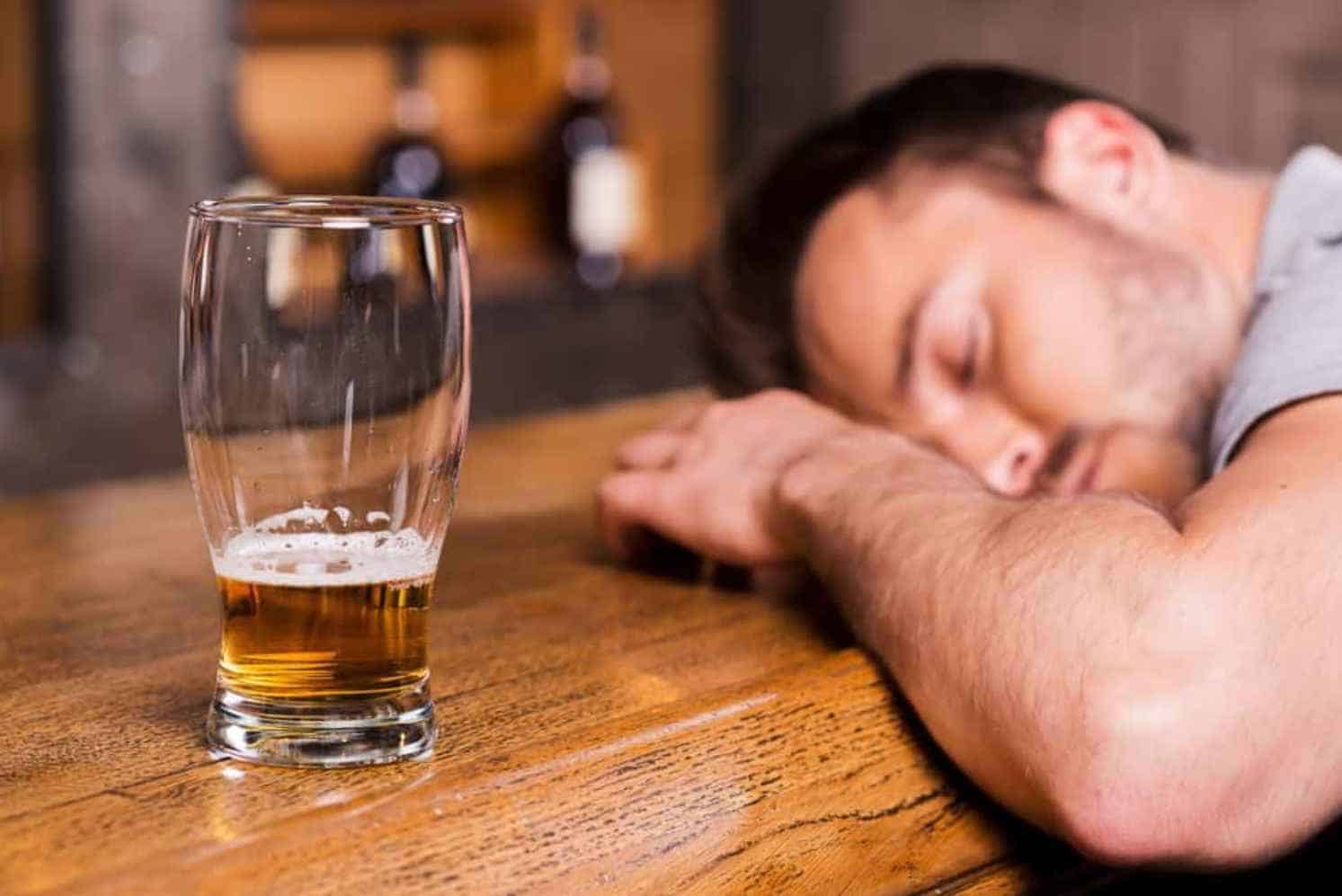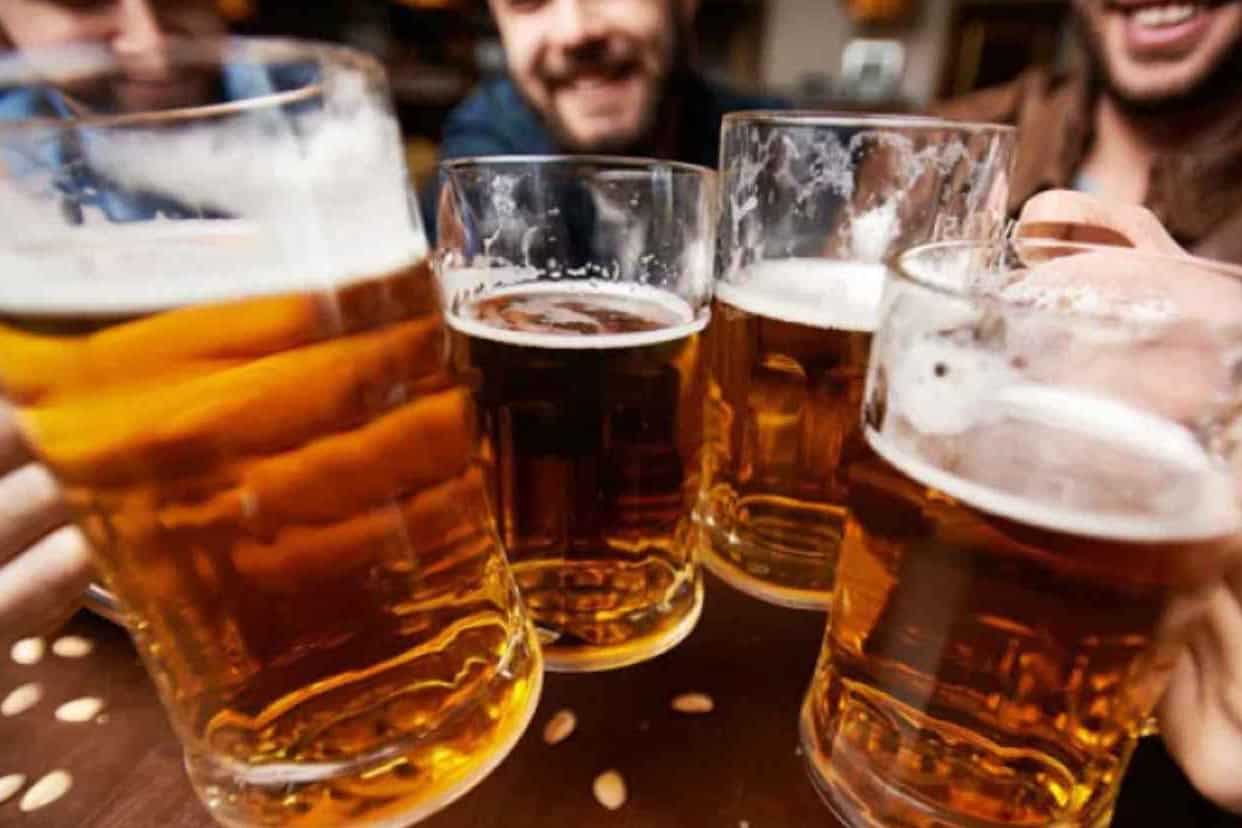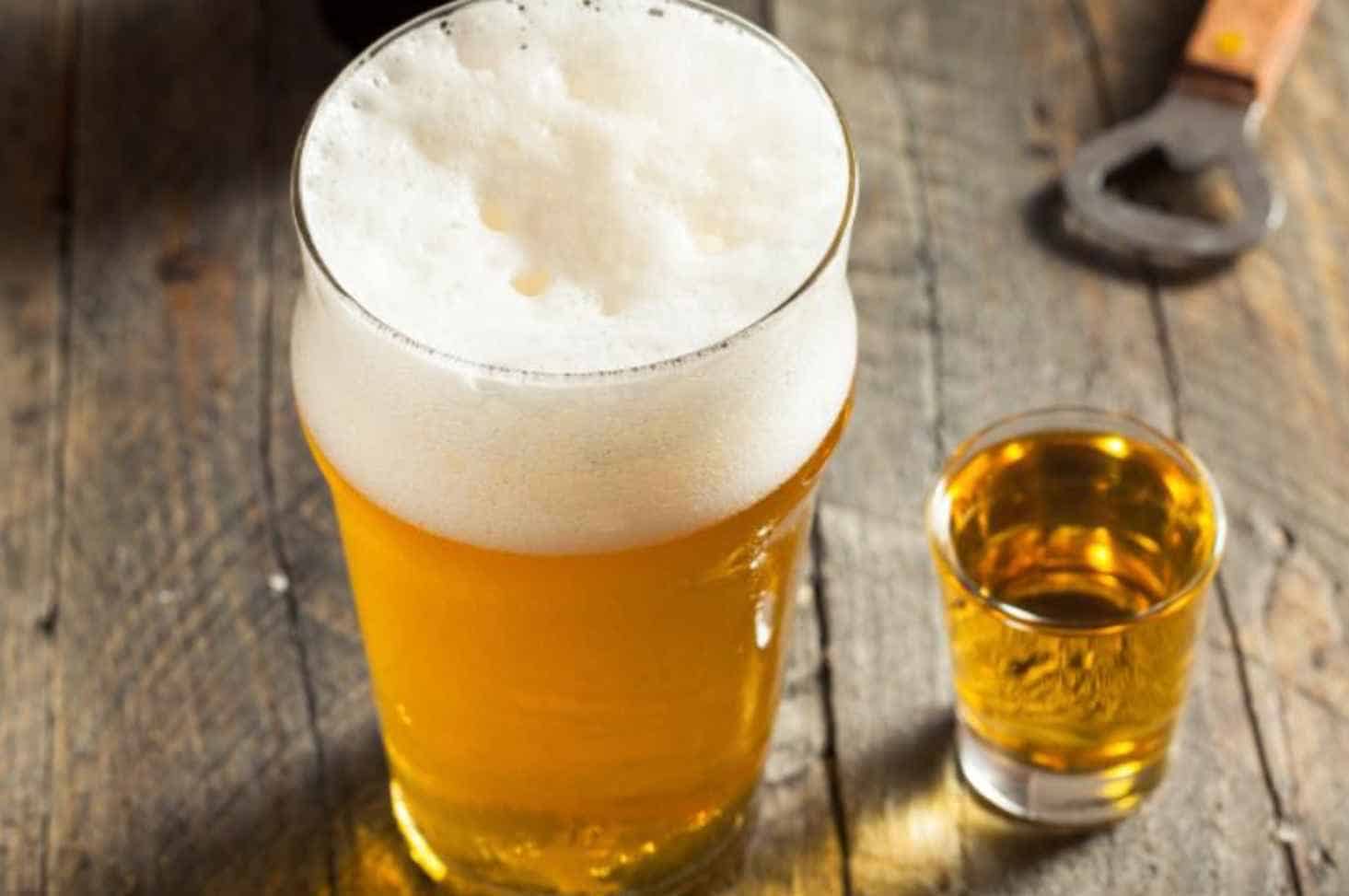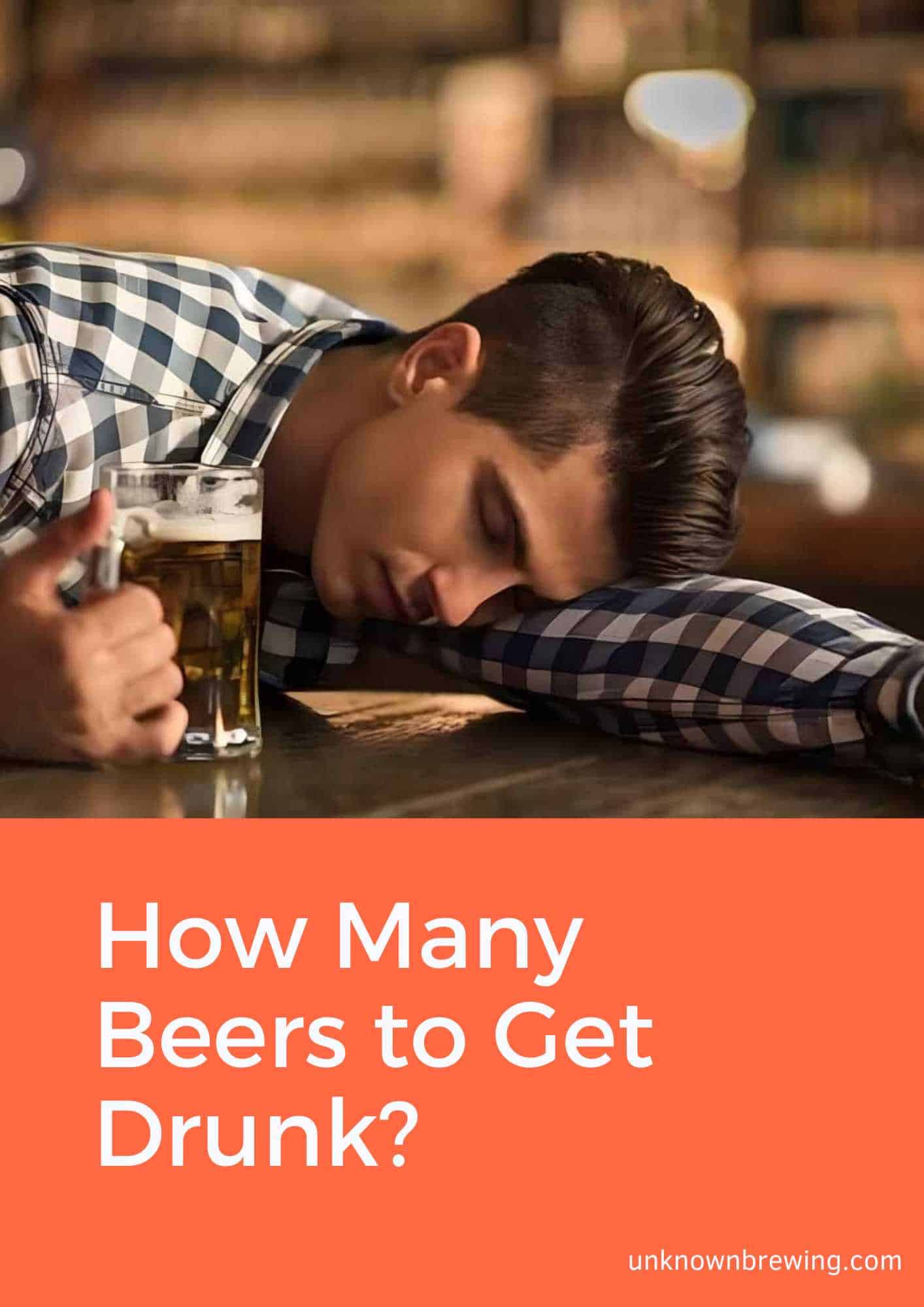Drinking beer can be fun and relaxing. However, consuming too much can result in irreversible consequences.
The key is knowing how many beers to get drunk. When you know your limit, you can ensure a safe and enjoyable experience. This article walks you through alcohol levels, signs of drunkenness, and safe alcohol consumption.
What Does Being Drunk Mean?
Drunk people in movies and TV shows usually slur their words and stumble around. But does this happen in real life? Yes, it does. However, signs of drunkenness will depend on a person’s blood alcohol level.
What is blood alcohol level?
Blood alcohol levels express how much alcohol is in your blood. Alcohol is the ingredient in beer that is responsible for intoxication. The small intestines and stomach quickly absorb the alcohol. Then it immediately transfers to the bloodstream.
To give you an idea, here’s the blood alcohol concentration based on a person’s average weight.
# of Beers | 100 lbs | 150 lbs | 200 lbs |
1 | 0.04 | 0.03 | 0.015 |
2 | 0.08 | 0.06 | 0.03 |
3 | 0.12 | 0.09 | 0.04 |
4 | 0.16 | 0.12 | 0.05 |
5 | 0.20 | 0.15 | 0.07 |
6 | 0.24 | 0.18 | 0.12 |
What is legally drunk?
A person is considered legally drunk in the United States if their blood alcohol concentration (BAC) is 0.8 and above. This level can get you arrested for driving under the influence (DUI) when you drink and drive.
Based on the chart above, a 100-lb person is already legally drunk after only two 12-0z bottles of beer.
What are the stages of drunkenness?
The blood alcohol content has mental and physical effects on a person. This list gives an overview of what will happen at a certain BAC level.
- 0% BAC: sober or no alcohol in the bloodstream
- 2% BAC: relaxed feeling, slight loss of judgment, and mood changes
- 5% BAC: lowered inhibition, impaired judgment, and weakened alertness
- 8% BAC: poor danger detection, impaired reasoning and judgment, and reduced muscle coordination
- 10% BAC: slurred speech, slow cognition, and reaction time
- 15% BAC: significant mood change, poor muscle control and balance, and vomiting or nausea
- 15%-30% BAC: vomiting, drowsiness, extreme confusion
- 30%-40% BAC: possible unconsciousness, alcohol poisoning
- 40% or higher BAC: respiratory arrest, coma, or death
How Many Beers Will Get You Drunk?
Based on the chart above, a 100-lb person will be legally drunk on his second beer bottle. In addition, they can already feel tired and confused between three to four bottles. Some might even vomit or feel nauseous.
The number of bottles to get drunk will also depend on the beer’s alcohol content. It is expressed as alcohol by volume or ABV. You can check for a beer’s ABV on the bottle label.
What is alcohol by volume?
Alcohol by volume, or ABV, measures how much pure alcohol a drink contains. It is a standard measurement that conveys the alcohol strength of a beer, wine, or liquor. You can commonly see the ABV of an alcoholic beverage on its bottle’s label.
There are several types of beer in the market, and not all have the same ABV percentage. For example, craft beers are known to have more alcohol content than commercial beers. So, it’s easy to get drunk on a few bottles.
Meanwhile, You will need to drink more light beers with a lower alcohol content to feel drunk.
The table below shows the ABV percentages of various beer types.
Beer Type | ABV % |
American Pale Ale | 4.4%-3.5% |
India Pale Ale | 6.3% - 7.5% |
Double IPA | 7%-14% |
Stout | 4%-9% |
Wheat | 4.8%-5.6% |
Pilsner | 4.1%-5.3% |
Amber Ale | 4.4%-6.1% |
English Pale Ale | 4.5%-5.5% |
Porter | 4.5%-6% |
Hefeweizen | 4.9%-5.6% |
Sour Beer | 3%-5% |
What are alcohol units?
Aside from the beer’s ABV percentage, it would help if you also considered the alcohol unit value. It is a measurement of a drink’s pure alcohol content. Generally, our liver can metabolize one unit of alcohol in one hour.
The formula to compute a drink’s alcohol unit value is ABV % x Volume (ml) /1000 = number of units.
For example, one 330-ml can of commercial beer has 5% alcohol. Based on the computation, it contains 1.32 alcohol units. So, it is recommended to drink one can per hour to allow your liver to process the alcohol optimally.
Do you want to know how many beers to drink before you reach .08% BAC? Please watch this video.
What Factors Can Make You Drunk?
Although there are standard measurements for alcohol content, other factors still affect drunkenness. How fast a person gets drunk will depend on the following:
- Age: When a person ages, their muscle mass decreases. Generally, you will feel the alcohol’s effects faster when your muscle mass is lower.
- Muscle Mass: As mentioned, the less muscle mass you have, the faster you’ll feel drunk. So, skinnier people might feel the effects of alcohol quicker than muscular folks.
- Weight: People on the heavier side will take more time getting drunk. On the other hand, those who weigh less may get intoxicated only after a few bottles or cans of beer.
- Height: Blood alcohol concentration takes longer to build up for tall people. It is because of their elongated circulatory system. So, tall people will need more drinks to get drunk than their shorter peers.
- Gender: In general, males have a higher beer tolerance than females. It is in relation to their muscular composition and body size. So, the larger a person’s body area, the more alcohol dilution. A larger physique also means more water inside the body can dilute the alcohol content.
- Alcohol Tolerance: People who don’t drink often may get buzzed faster than seasoned drinkers. First-timers may also get drunk more quickly than those who drink often.
- Full or Empty Stomach: Eating before drinking beer can slow down its intoxicating effects. Food in the stomach can prevent alcohol from entering the bloodstream. It can also absorb excess alcohol. So, a person who drinks on an empty stomach will get drunk faster.
How does alcohol make you drunk?
The stomach and small intestines soak up the alcohol once ingested. Then, the substance goes to the bloodstream and travels to other organs.
Generally, a person can feel the effects of alcohol within 15-45 minutes of ingestion. However, it will still depend on how fast the body absorbs the drink.
Meanwhile, the liver will consider alcohol as a toxic substance. It will then metabolize and filter it. If the liver can’t keep up with beer intake, a person can feel the effects of being drunk faster than usual.
Generally, the liver can only process a 12-ounce beer in an hour. However, it will still depend on the drink’s alcohol content.
How Not to Get Drunk Fast
Sometimes, drinking beer is inevitable, especially at social events. However, getting drunk is not a good experience. You might do things you’ll regret later. There are ways to prevent getting drunk faster than usual.
8 Tips on How Not to Get Drunk Fast
Suppose you’re attending a party where there will be drinks. Applying the following helpful tips is best, so you won’t get drunk quickly.
- Eat a full meal or a filling snack before drinking beer.
- Try to include eggs, sweet potatoes, berries, or bananas in your meal.
- Have some bar chow while drinking.
- Sip your drink slowly and avoid chugging it.
- Maintain a BAC level below .06 percent.
- Drink plenty of water in between beers.
- Add ice to your beer to dilute its alcohol content.
- Don’t order another drink before you finish your present one.
Here are more tips on how not to get drunk fast.
How to monitor your blood alcohol content level
The key to responsible drinking is to monitor your blood alcohol content level or BAC. You can measure it after 30 minutes to one hour after taking your first drink. Using a BAC calculator is best to check if you’ve had enough beers. Remember to keep the level at 0.06% BAC.
It’s crucial to note that every person metabolizes alcohol differently. So use the calculator only to estimate. Don’t use it to gauge if you’re sober enough to drive or do other activities.
How many drinks is too much?
The National Institute on Alcohol Abuse and Alcoholism (NIAAA) characterizes heavy alcohol use as the following:
- For women: three standard drinks per day or seven drinks or more per week
- For men: four standard drinks per day or 14 drinks or more per week
What will happen if you drink too much?
Drinking too much alcohol can adversely affect your physical and mental health. If you’re drinking faster than your liver can process it, you can experience the following:
- Vomiting
- Altered mental state
- Confusion
- Loss of consciousness
- Pale skin
- Hypothermia (lowered body temperature)
Conclusion
An ice-cold beer can be a treat after a long, tiring day. However, if you consume one drink too many, you’ll reap adverse effects. The key is knowing how many beers to get drunk. You can have a safer and more enjoyable time if you know your limits.

As a homebrewer, Michael would get frustrated about the lack of brewing information on the internet. After hundreds of gallons of spoilt batches, Micheal had enough. And he founded Unknown Brewing as a resource for homebrewers.





